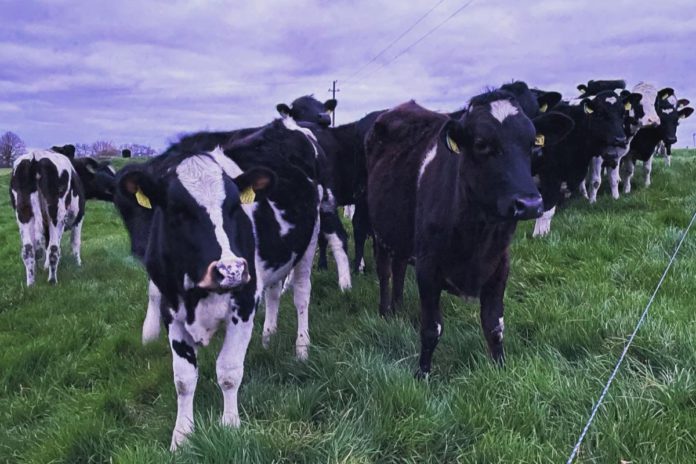In this article, Richard Gibson of the College of Agriculture, Food and Rural Enterprise (CAFRE) discusses managing summer mastitis.
During warmer conditions in mid-summer, the risk of summer mastitis is high.
As you start drying off cows and have in-calf heifers grazing, you should take necessary prevention methods.
Summer mastitis
Farmers should consider the following:
- Antibiotics/teat seals: Dry cow tubes have been shown to reduce the level of disease by up to 80%. It is crucial that all tubing is done under aseptic conditions. After drying off, use a teat sealant to seal the teat canal, preventing new infection. Always consider the need for antibiotic carefully and use non-antibiotic dry cow therapy where possible;
- Fly control: Fly control products are usually applied along the back of the animal, but you can use around the udder as well. A number of these products provide cover for four weeks. However, in warm conditions, when the incidence of mastitis is high, apply every two weeks. Farmers should always adhere to the manufacturer’s instructions on application and potential withdrawal periods.
- Grazing conditions: The area animals graze during the dry period may influence the level of flies. It is advisable to avoid fields that are well sheltered with a lot of tree cover. Furthermore, keep fields topped to reduce tall weeds or old senescent seed heads. These provide cover for flies or can help spread infection as animals walk around the area.
- Teat damage: House animals with any teat sores or physical udder damage. Wounds will attract flies and increase the likelihood of infection
- Isolate infected animals: Remove animals showing signs of infection from the group and keep them isolated. If the infected quarter is milked out, carefully discard the strippings due to the risk of spreading infection.
Homeopathy
That’s Farming recently interviewed Pat Aherne, who began to explore a more unconventional approach to farming when he had a major outbreak of mastitis about ten years ago, with sixteen cases being treated at one time.
Pat said: “I remember coming into the parlour one morning and feeling like I was going into a war against nature and that I was not winning the battle.”
Amazingly, he did get on top of the issue but swore that he would never subject his cows to the same level of antibiotic treatment again. He said that it was “unsustainable economically, as well as taking its toll on both man and beast”.
By happy accident, he discovered homeopathy in 2010 – an event that would change his life.
Pat still has cases of mastitis, but he prevents most cases from worsening and improves recovery time just by using homeopathy and holistic approaches.
You can read the full interview here.
More farming tips.





